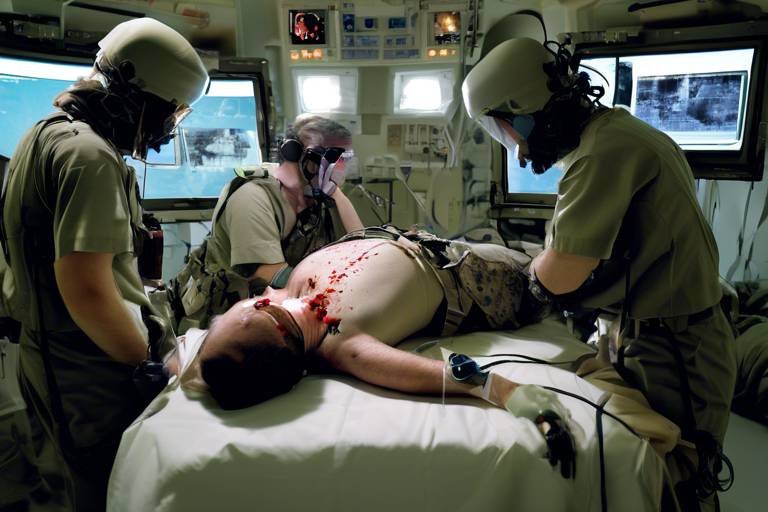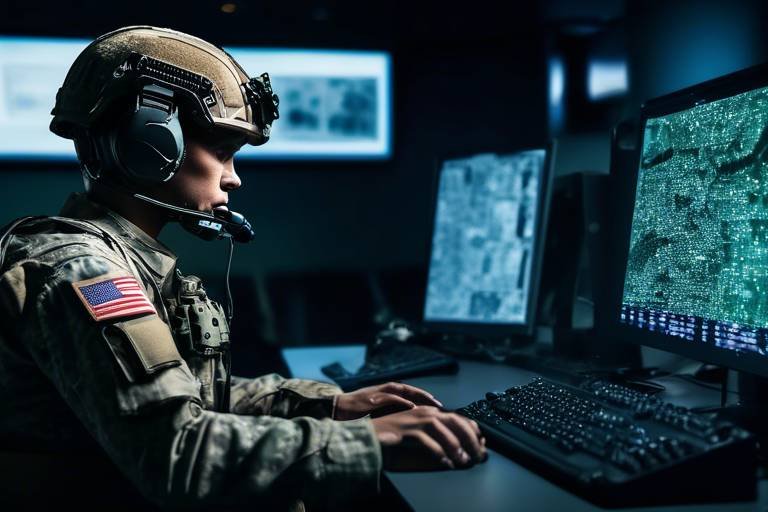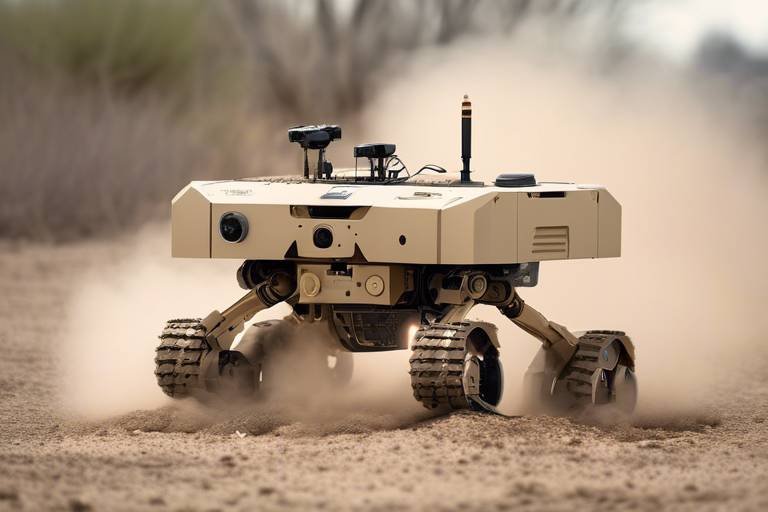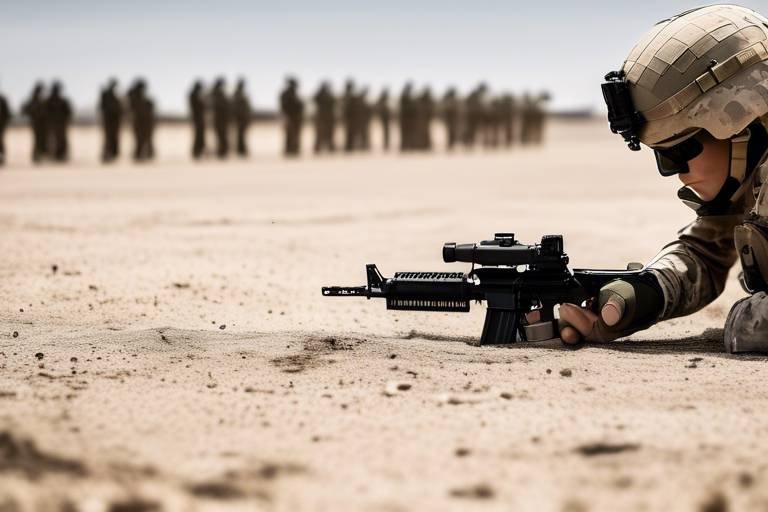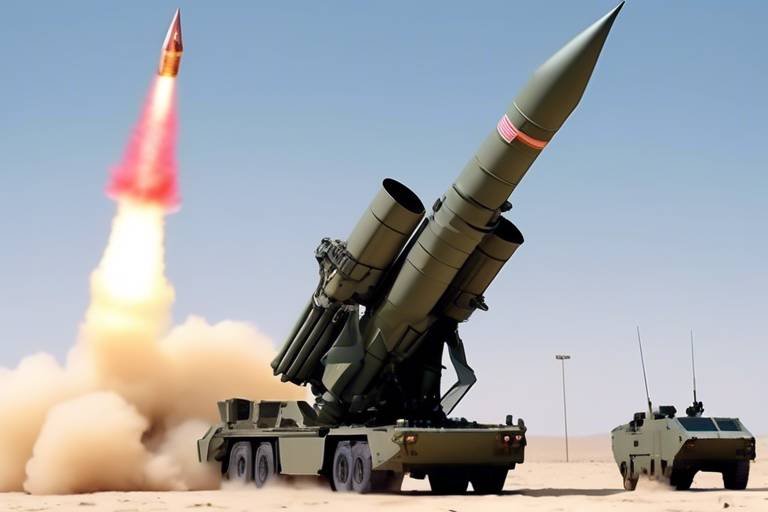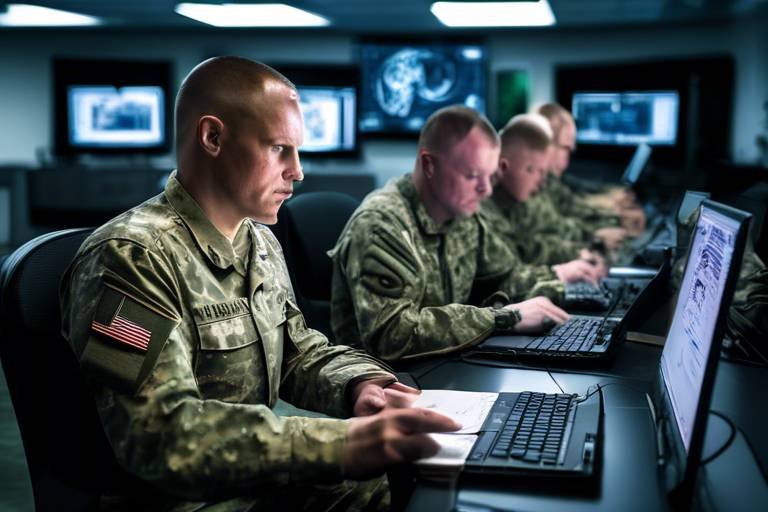The Future of Military Operations - Key Challenges
As we stand on the brink of a new era in military operations, it's clear that the landscape is evolving rapidly. The complexities of modern warfare are no longer confined to the battlefield; they extend into the realms of technology, geopolitics, and even the environment. With these changes come significant challenges that modern armed forces must navigate to ensure operational effectiveness and national security. The question arises: how do military organizations adapt to such a dynamic environment? The answer lies in understanding the multifaceted challenges they face and developing strategies to address them.
The rapid pace of technological innovation presents both opportunities and challenges for military operations. On one hand, advanced technologies such as artificial intelligence, drones, and robotics can enhance operational capabilities, making missions more efficient and effective. However, the integration of these tools requires a strategic approach to ensure that they complement existing systems rather than complicate them. Imagine trying to assemble a complex puzzle without knowing what the final picture looks like; that's how military leaders feel when integrating new technologies. They must constantly adapt, learn, and refine their strategies to keep pace with the ever-evolving tech landscape.
As military operations become increasingly reliant on digital infrastructure, the specter of cybersecurity threats looms large. Cyberattacks can compromise mission effectiveness and national security, making it imperative for armed forces to bolster their defenses against these invisible foes. The military must not only invest in cutting-edge cybersecurity measures but also foster a culture of awareness and preparedness among personnel. Just like a fortress needs strong walls to protect against invaders, military organizations must build robust cybersecurity frameworks to guard against potential breaches.
Rising geopolitical tensions around the globe are reshaping military strategies. Countries are reevaluating alliances, defense postures, and operational readiness in response to shifting power dynamics. This environment creates a precarious balancing act, where military leaders must anticipate potential conflicts while ensuring that their forces remain prepared for a variety of scenarios. Think of it as a game of chess, where each move can have far-reaching consequences. As such, understanding the motivations and actions of other nations is crucial for effective military planning.
Effective resource allocation is critical for maintaining operational readiness. However, competing priorities and budget constraints complicate decision-making processes within military organizations. It's akin to trying to stretch a rubber band; the more you pull, the closer you get to breaking point. Military leaders must carefully balance the need for advanced equipment, training, and personnel against the realities of limited resources. This requires not only strategic foresight but also the ability to make tough choices that can impact the future of military operations.
At the heart of military operations are the people who carry out the missions. Understanding human behavior and decision-making in combat scenarios is essential for improving training, leadership, and operational effectiveness. The military must recognize that technology alone cannot win wars; it is the human element that ultimately determines success or failure. This means investing in leadership development and psychological training to prepare personnel for the complexities of modern warfare. Just as a skilled conductor brings harmony to an orchestra, effective leadership can unify diverse forces to achieve common goals.
Climate change and environmental degradation introduce new challenges for military operations, affecting logistics, resource availability, and operational planning in diverse environments. As extreme weather events become more frequent, military planners must account for these variables in their strategies. Picture a soldier trying to navigate through a flooded battlefield; without proper preparation, the mission could quickly become untenable. Therefore, adapting to environmental challenges is not just about being reactive; it's about being proactive and integrating sustainability into military operations.
Pandemics and health emergencies can disrupt military operations, highlighting the need for preparedness and resilience in the face of public health challenges. The COVID-19 pandemic is a stark reminder of how quickly the landscape can change, forcing militaries to adapt their operations to ensure the safety of personnel while fulfilling their missions. This requires a multifaceted approach that includes health protocols, logistical adjustments, and a commitment to maintaining operational readiness, even in the face of unforeseen challenges.
The rise of asymmetric warfare tactics necessitates a shift in military strategy, focusing on countering unconventional threats and adapting to non-traditional combat scenarios. This form of warfare often involves smaller, agile forces employing guerrilla tactics against larger, conventional military units. To effectively counter these threats, military leaders must think outside the box and develop innovative strategies that leverage their strengths while mitigating vulnerabilities. It's like trying to catch a shadow; the more you chase it, the more elusive it becomes.
Enhancing interoperability among allied forces is crucial for successful joint operations. This requires standardized protocols and effective communication systems to ensure cohesive action. When different military branches and allied nations can seamlessly work together, the result is a more formidable force capable of addressing complex challenges. Imagine a well-rehearsed dance performance where each dancer knows their role; that’s the power of interoperability in military operations. It ensures that all parts move in harmony toward a common objective.
- What are the main challenges facing modern military operations?
The main challenges include technological advancements, cybersecurity threats, geopolitical tensions, resource allocation, human factors in warfare, environmental challenges, global health crises, asymmetric warfare, and interoperability among forces. - How does technology impact military operations?
Technology can enhance operational capabilities but also requires careful integration and adaptation to avoid complications. - Why is cybersecurity important for military operations?
Cybersecurity is crucial because military operations increasingly rely on digital infrastructure, and breaches can compromise mission effectiveness. - What role do human factors play in military effectiveness?
Understanding human behavior and decision-making is essential for improving training and leadership, ultimately impacting mission success.
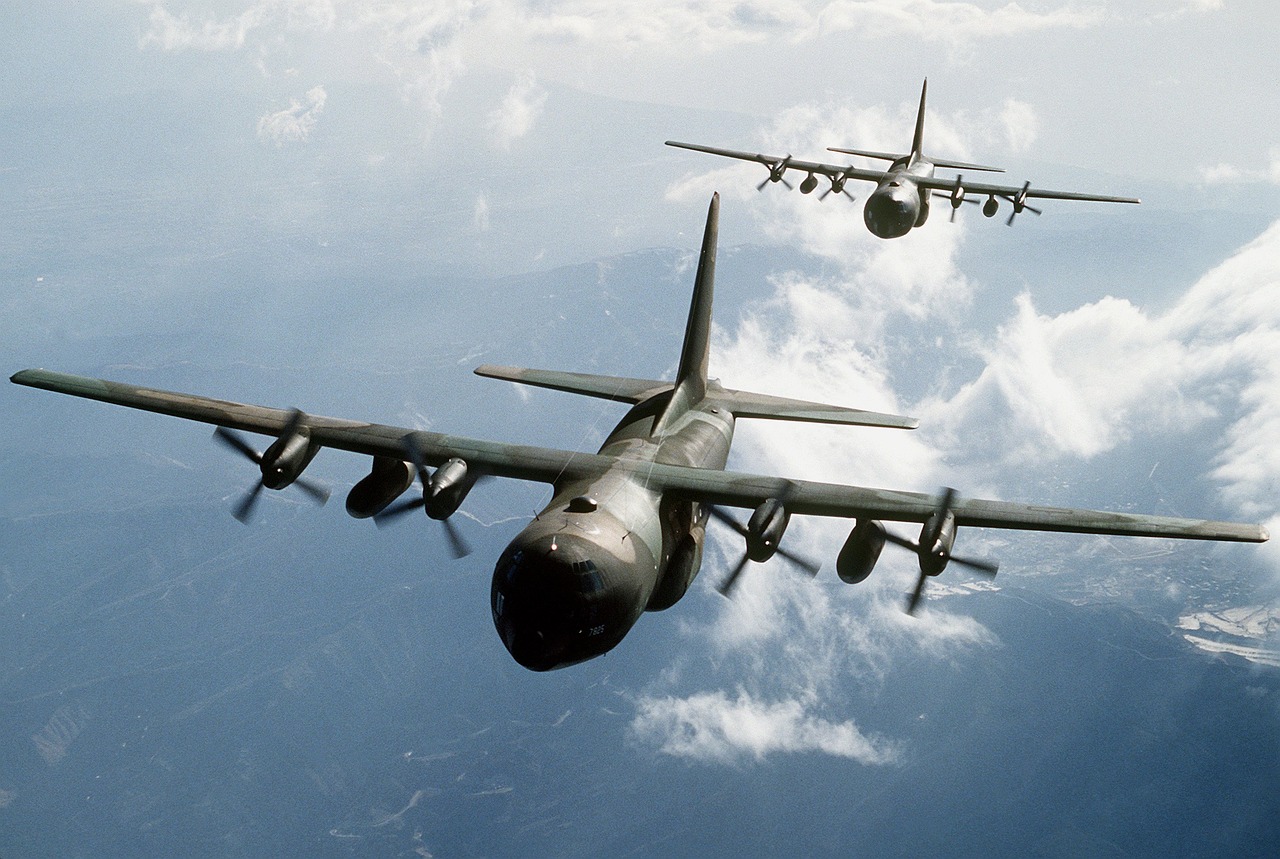
Technological Advancements
In today's rapidly changing world, are reshaping the landscape of military operations. Imagine a battlefield where drones zip through the sky, gathering intelligence in real-time, or where soldiers are equipped with augmented reality glasses that overlay critical information right before their eyes. This isn't science fiction; it's the reality of modern warfare. However, while these innovations present remarkable opportunities, they also introduce a host of challenges that military forces must navigate.
One of the most significant changes is the integration of artificial intelligence (AI) into military operations. AI can analyze vast amounts of data faster than any human could, assisting commanders in making informed decisions. For instance, AI-driven analytics can predict enemy movements, optimize logistics, and enhance operational planning. However, this reliance on technology raises questions about security and ethics. What happens if an AI system malfunctions or is manipulated by adversaries? The potential for catastrophic failures looms large, urging military leaders to tread carefully.
Moreover, the rise of unmanned systems—like drones and robotic ground vehicles—has revolutionized how military operations are conducted. These systems can perform reconnaissance, deliver supplies, and even engage in combat without putting human lives at risk. But, as we embrace this technology, we must also consider the implications of autonomous warfare. As machines take on more responsibilities, the line between human decision-making and machine autonomy blurs, raising critical questions about accountability and the moral implications of using robots in combat.
Another area of technological advancement is the development of cyber capabilities. Modern militaries are increasingly relying on digital infrastructure for communication, intelligence, and operations. This reliance makes them vulnerable to cyber-attacks, which can disrupt operations and compromise sensitive information. In fact, a single cyber breach can have repercussions that extend far beyond the immediate impact, potentially altering the course of a conflict. Therefore, military forces must invest heavily in cybersecurity measures to protect their assets and ensure mission success.
As military technology continues to evolve, the importance of training and adaptation cannot be overstated. Soldiers must be prepared to operate in environments that are becoming increasingly complex due to technological integration. This includes understanding how to effectively use new tools, interpreting data provided by AI systems, and adapting to the fast-paced nature of modern warfare. Continuous training programs that incorporate simulations and real-world scenarios are essential to ensure personnel are ready to face the challenges of tomorrow.
In summary, while technological advancements offer exciting possibilities for enhancing military operations, they also present significant challenges that must be addressed. The balance between leveraging these innovations and managing the associated risks is crucial for the success of modern armed forces. As we look to the future, the military must remain agile and proactive, ensuring that they are not just reactive to technological changes but are at the forefront of innovation.
- What role does AI play in modern military operations? AI assists in data analysis, decision-making, and operational planning, enhancing the effectiveness of military strategies.
- How do unmanned systems impact warfare? Unmanned systems reduce risk to human life and can perform various tasks, but they also raise ethical concerns regarding autonomous warfare.
- Why is cybersecurity crucial for military operations? Cybersecurity protects sensitive information and ensures that military communications and operations remain secure from adversaries.
- What is the importance of training in adapting to new technologies? Continuous training ensures that military personnel can effectively use new technologies and adapt to the evolving nature of warfare.
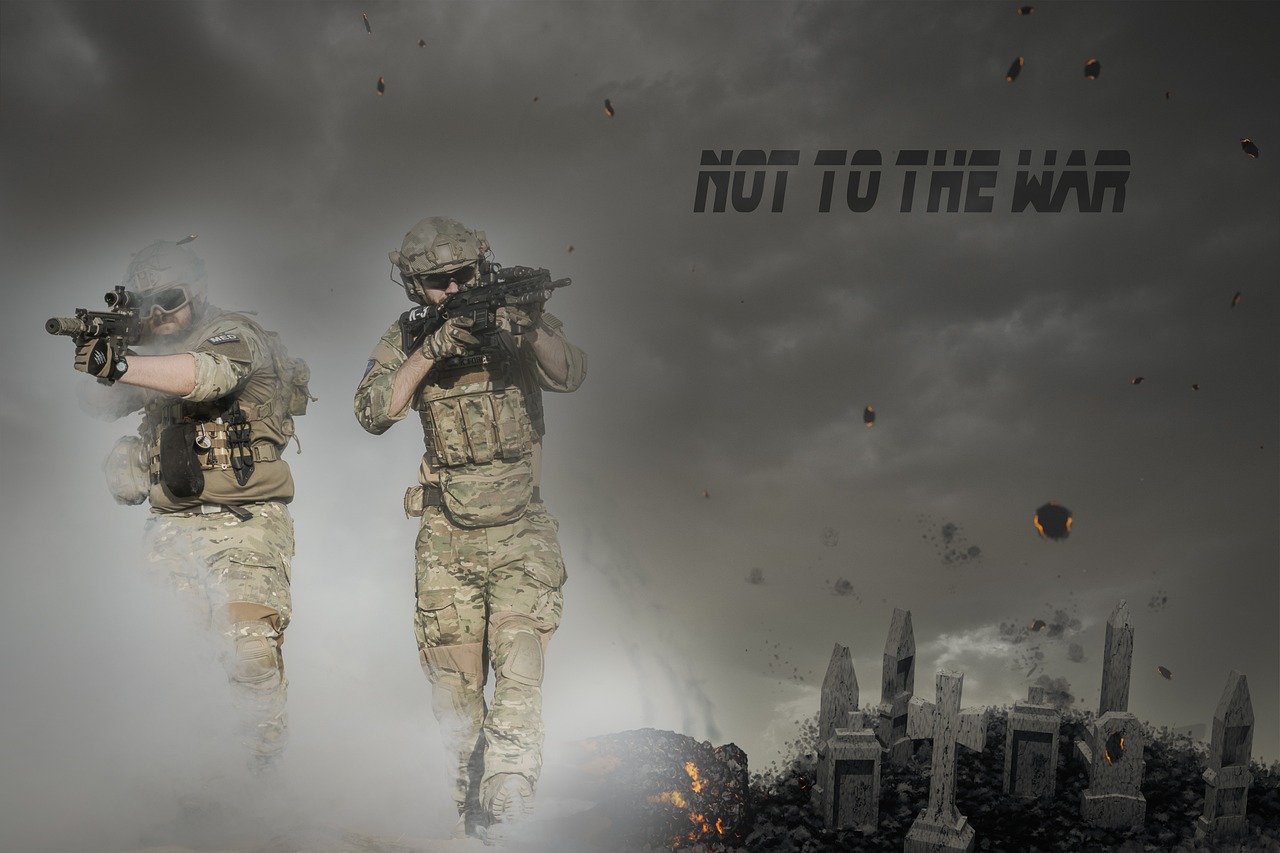
Cybersecurity Threats
In today's digital age, the military's reliance on technology has skyrocketed, bringing about a new era of warfare that is as much about bytes and bits as it is about bullets and bombs. Imagine a battlefield where the enemy can infiltrate systems without ever stepping foot on the ground. This is the reality of faced by modern armed forces. The stakes are incredibly high, and the implications of a successful cyberattack can be catastrophic, affecting everything from operational readiness to national security.
The military's digital infrastructure is a complex web of interconnected systems that manage everything from logistics to communication. However, this interconnectedness also opens up numerous vulnerabilities. Cyber adversaries are constantly evolving their tactics, employing sophisticated methods to breach defenses. These threats can range from state-sponsored hacking to insider threats, and even the use of ransomware that can cripple essential military operations. The challenge lies not only in defending against these attacks but also in anticipating them.
Furthermore, the consequences of a cyber incident can ripple far beyond the immediate effects. For instance, a successful cyberattack could lead to:
- Data Breaches: Sensitive information could be stolen, including troop movements and strategic plans.
- Disruption of Communications: Command and control systems could be compromised, leading to chaos on the battlefield.
- Loss of Trust: Allies and partners may lose confidence in shared operations if cybersecurity is not prioritized.
To combat these threats, military organizations are investing heavily in cyber defense strategies. This includes the development of specialized cyber units, enhanced training for personnel, and the implementation of advanced technologies such as artificial intelligence to detect and respond to cyber incidents more effectively. Additionally, collaboration with the private sector is becoming increasingly vital, as many cybersecurity innovations originate in the commercial space.
However, it's not just about technology. The human element remains a critical factor in cybersecurity. Training personnel to recognize phishing attempts and social engineering tactics is essential. After all, what good is a state-of-the-art firewall if a soldier clicks on a malicious link? This blend of technology and human awareness is the cornerstone of a robust cybersecurity posture.
As we look to the future, the importance of cybersecurity in military operations cannot be overstated. The battlefield of tomorrow will not only be defined by physical confrontations but also by digital skirmishes. Therefore, it is imperative for military leaders to prioritize cybersecurity as a fundamental aspect of operational planning and strategy. The question remains: are we doing enough to safeguard our digital frontiers?
Q: What are the main types of cybersecurity threats faced by the military?
A: The military faces various threats, including state-sponsored hacking, insider threats, ransomware, and phishing attacks.
Q: How can military personnel be better prepared to handle cybersecurity threats?
A: Training programs focusing on recognizing cyber threats, implementing robust security protocols, and fostering a culture of cybersecurity awareness are essential.
Q: What role does technology play in enhancing military cybersecurity?
A: Advanced technologies, such as artificial intelligence and machine learning, are being used to detect and respond to cyber threats more effectively, improving overall security posture.
Q: Why is collaboration with the private sector important for military cybersecurity?
A: The private sector often leads in cybersecurity innovations, and collaboration can provide the military with access to cutting-edge technologies and expertise.
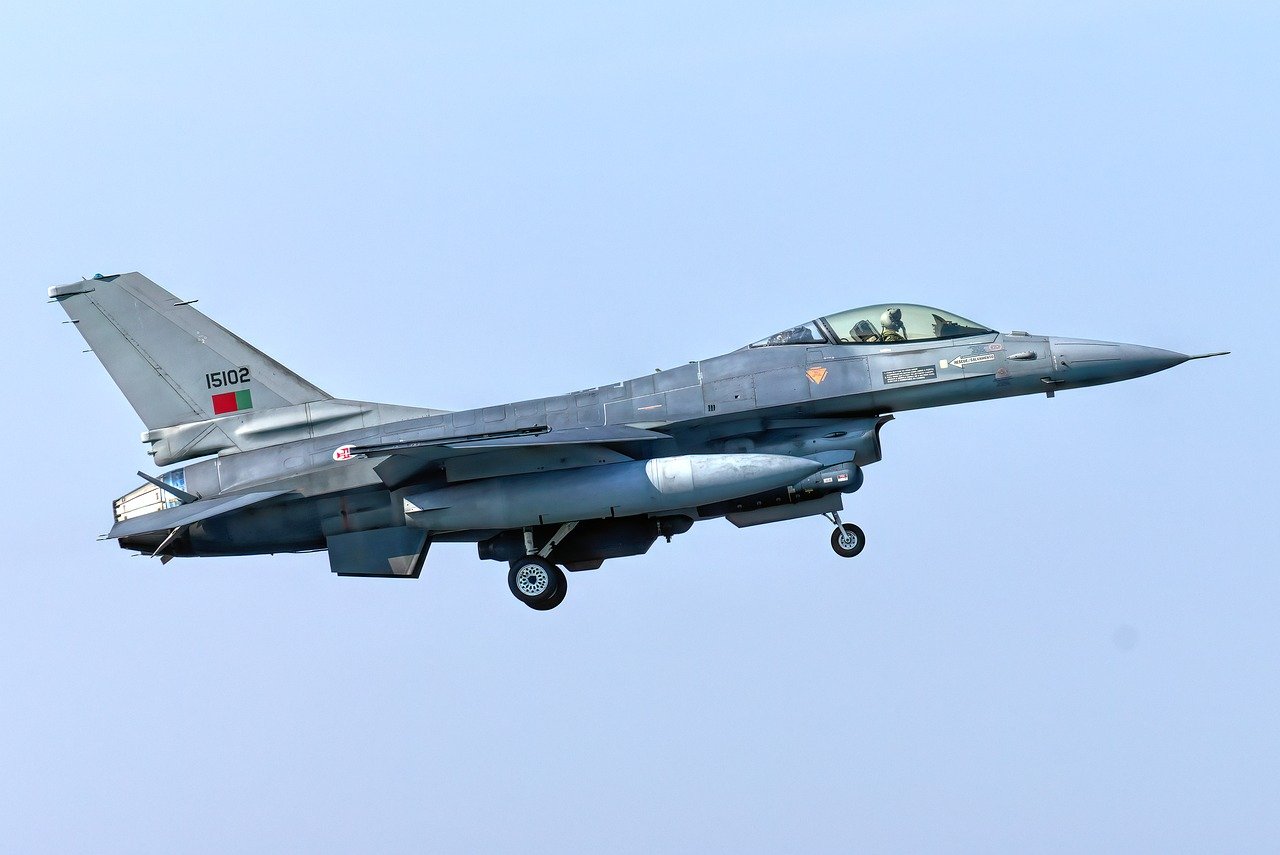
Geopolitical Tensions
This article explores the evolving landscape of military operations, focusing on the challenges that modern armed forces face in an increasingly complex global environment.
The rapid pace of technological innovation presents both opportunities and challenges for military operations, requiring adaptation and strategic integration of new tools and systems.
As military operations become more reliant on digital infrastructure, cybersecurity threats pose significant risks that can compromise mission effectiveness and national security.
In today's world, the landscape of is as volatile as ever. Countries are constantly jockeying for power, influence, and resources, creating a complex web of alliances and rivalries that can shift overnight. This fluidity demands that military strategists remain vigilant and adaptable. Have you ever tried to play chess with a constantly changing board? That's what modern military operations feel like!
As nations assert their interests, we see a rise in regional conflicts and shifting alliances. For instance, tensions in the South China Sea and Eastern Europe are not just local issues; they have global implications. The military must navigate these challenges while ensuring that they are prepared for any potential fallout. This means reevaluating defense postures and considering how best to deploy resources in a way that deters aggression without escalating conflicts further.
Moreover, the impact of isn't just about military might. It also involves economic sanctions, cyber warfare, and diplomatic maneuvers. The interplay of these factors complicates decision-making for military leaders, who must consider not just the immediate tactical situation but also the broader strategic landscape. For example, a single military operation could have ramifications that ripple through international relations, affecting everything from trade agreements to alliance commitments.
To illustrate this complexity, consider the following table that outlines some key regions currently experiencing heightened geopolitical tensions:
| Region | Key Tensions | Potential Military Implications |
|---|---|---|
| South China Sea | Territorial disputes among China, Vietnam, and the Philippines | Increased naval presence and potential for conflict |
| Eastern Europe | Russia's actions in Ukraine and NATO's response | Heightened readiness and troop deployments |
| Middle East | Iran's nuclear ambitions and U.S. interests | Potential for airstrikes and military engagement |
In conclusion, the landscape of geopolitical tensions is a crucial factor that military operations must navigate. The ability to assess and respond to these tensions is not just a matter of military strategy; it’s a matter of national security. As we move forward, understanding these dynamics will be essential for any armed force aiming to maintain operational readiness and effectiveness in an unpredictable world.
Effective resource allocation is critical for maintaining operational readiness, but competing priorities and budget constraints complicate decision-making processes within military organizations.
Understanding human behavior and decision-making in combat scenarios is essential for improving training, leadership, and operational effectiveness in military missions.
Climate change and environmental degradation introduce new challenges for military operations, affecting logistics, resource availability, and operational planning in diverse environments.
Pandemics and health emergencies can disrupt military operations, highlighting the need for preparedness and resilience in the face of public health challenges.
The rise of asymmetric warfare tactics necessitates a shift in military strategy, focusing on countering unconventional threats and adapting to non-traditional combat scenarios.
Enhancing interoperability among allied forces is crucial for successful joint operations, requiring standardized protocols and effective communication systems to ensure cohesive action.
- What are the main challenges faced by modern military operations?
Modern military operations face challenges such as technological advancements, cybersecurity threats, geopolitical tensions, and resource allocation issues.
- How do geopolitical tensions impact military strategy?
Geopolitical tensions necessitate a reevaluation of alliances and defense postures, influencing military readiness and operational planning.
- Why is cybersecurity important for military operations?
As military operations increasingly rely on digital infrastructure, cybersecurity threats can compromise mission effectiveness and national security.

Resource Allocation
The military landscape is constantly shifting, and with it comes the critical necessity of effective . Imagine trying to build a house without the right tools or materials; that’s what it’s like for armed forces when they lack the necessary resources. In an era where threats evolve rapidly, having the right equipment, personnel, and technology is not just beneficial—it’s essential for operational success. However, the challenge lies in the balancing act of distributing these resources efficiently, especially when faced with competing priorities and budget constraints.
One of the biggest hurdles in resource allocation is the budgetary limitations. Military organizations often find themselves in a tug-of-war with government budgets, where defense spending competes with other pressing national needs like healthcare and education. This competition can lead to tough decisions about which programs receive funding and which ones are left wanting. For instance, a military unit may need advanced drones for surveillance, but if the budget is tight, that funding might be redirected to immediate troop welfare instead. This scenario illustrates the constant juggling act military leaders must perform to ensure that their forces remain prepared and effective.
Moreover, the dynamic nature of threats adds another layer of complexity to resource allocation. As new forms of warfare emerge—be it cyber threats, drone warfare, or asymmetric tactics—military leaders must be agile in reallocating resources to meet these challenges. This might mean investing in cybersecurity measures over traditional hardware, which can feel like a gamble. The question arises: how do you predict where the next threat will come from? It’s a bit like trying to forecast the weather; you can use data and models, but there’s always an element of uncertainty.
Additionally, effective resource allocation requires a keen understanding of logistical capabilities. It's not enough to simply have resources available; they must be delivered where and when they are needed. This involves intricate planning and coordination, especially in multinational operations where forces from different nations must work together seamlessly. A well-coordinated supply chain can mean the difference between success and failure in a mission. For example, if one unit is low on ammunition and another has a surplus, a quick transfer of resources can keep the operation running smoothly.
To illustrate the importance of resource allocation, consider the following table that outlines the key areas of focus and their associated challenges:
| Area of Focus | Challenges |
|---|---|
| Budget Management | Competing national priorities, limited funding |
| Logistics | Coordination among units, timely delivery |
| Technology Integration | Keeping up with rapid advancements, training personnel |
| Personnel Allocation | Retaining skilled personnel, addressing morale issues |
In conclusion, resource allocation in military operations is a multifaceted challenge that requires strategic foresight and adaptability. It’s not merely about having the right tools; it’s about ensuring those tools are used effectively and efficiently in the face of evolving threats. As military leaders navigate this complex landscape, they must remain vigilant, innovative, and prepared to make tough decisions that can impact national security.
- What are the main challenges in military resource allocation? The main challenges include budget constraints, logistical complexities, and the need for rapid adaptation to emerging threats.
- How does technology impact resource allocation? Technology can streamline operations and improve efficiency, but it also requires ongoing investment and training, which can strain budgets.
- Why is logistics critical in resource allocation? Logistics ensures that resources are delivered where they are needed, which is crucial for mission success.
- What role does personnel management play in resource allocation? Retaining skilled personnel and addressing their needs is essential for maintaining operational readiness and effectiveness.
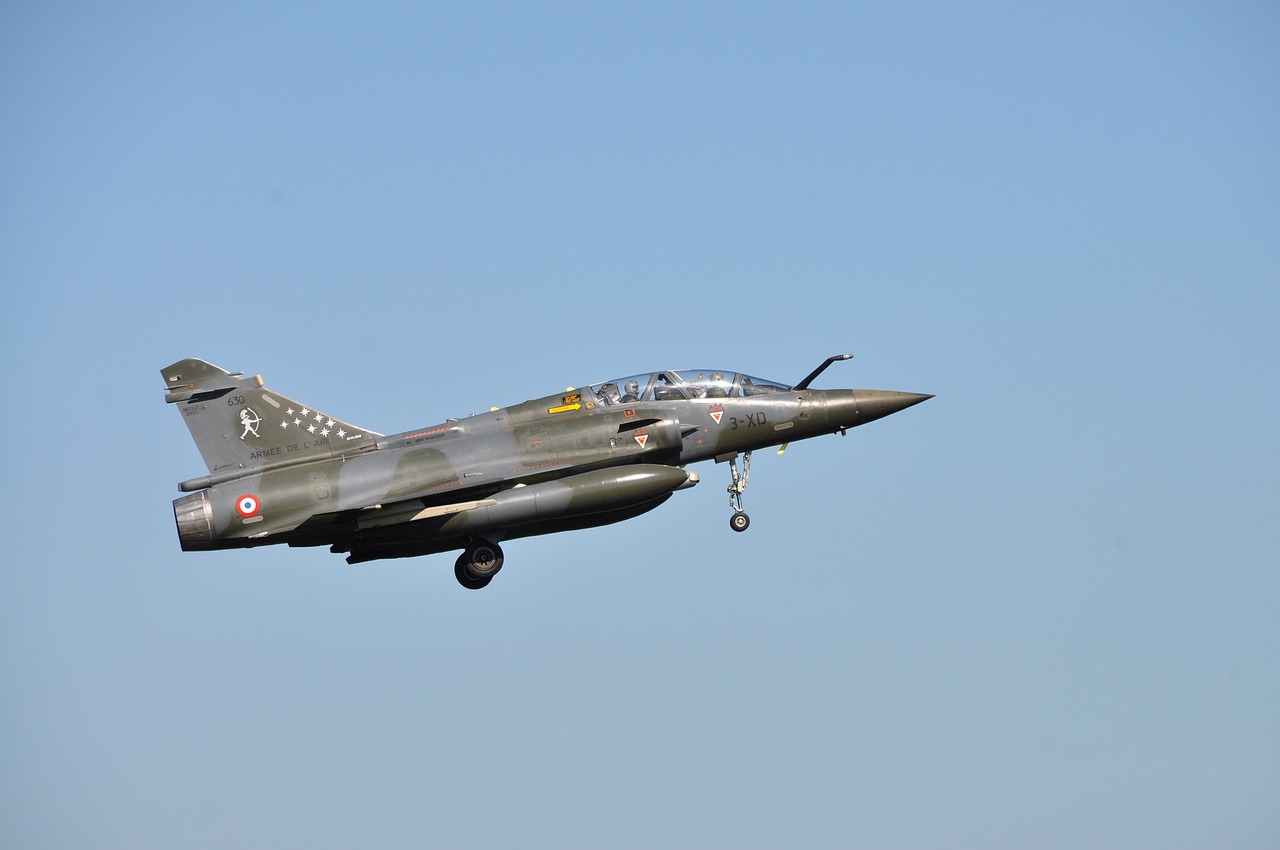
Human Factors in Warfare
When we think about warfare, the first images that often come to mind are tanks rolling across the battlefield, aircraft soaring through the skies, and soldiers in combat gear. However, beneath this dramatic surface lies a complex web of human factors that significantly influence military operations. Understanding these factors is not just an academic exercise; it is crucial for improving training, leadership, and operational effectiveness in military missions.
At the heart of military operations are the individuals who carry out missions. Each soldier, pilot, and commander brings their own set of experiences, emotions, and psychological states to the battlefield. This human element can be the difference between success and failure. For instance, consider the impact of stress and fatigue on a soldier's decision-making ability. In high-pressure situations, the ability to think clearly can diminish, potentially leading to catastrophic outcomes. Therefore, military organizations must prioritize mental health and resilience training to prepare personnel for the rigors of combat.
Moreover, leadership plays a pivotal role in shaping the human factors of warfare. Effective leaders inspire confidence and foster a sense of camaraderie among troops. They must not only be tactical experts but also emotional intelligence practitioners, capable of understanding the needs and concerns of their team. This dynamic can be likened to a sports coach who motivates players to perform at their best, even under pressure. A leader’s ability to communicate effectively, provide constructive feedback, and create an environment of trust can enhance operational performance significantly.
In addition to individual and leadership factors, the dynamics of team cohesion cannot be overlooked. A well-coordinated team can execute complex operations more efficiently than a group of individuals acting independently. This is where training becomes essential. Through rigorous drills and simulations, military units can develop a sense of unity and shared purpose. For example, during joint exercises, forces from different branches or allied nations must learn to work together seamlessly, much like a well-rehearsed orchestra where each musician plays their part to create a harmonious performance.
Another critical aspect is the role of cultural awareness in modern warfare. As military operations increasingly take place in diverse environments, understanding local customs, traditions, and languages can greatly enhance mission success. Ignoring these factors can lead to misunderstandings and conflict with local populations, undermining the overall objectives of military presence. Thus, integrating cultural training into military curricula is vital for preparing personnel for deployment in various regions around the world.
Furthermore, the integration of technology in warfare introduces new human factors. While advanced systems can enhance capabilities, they also require personnel to adapt to new tools and interfaces. The challenge lies in ensuring that soldiers are not only trained to use these technologies but also understand their limitations. This is akin to a pilot learning to fly a new aircraft; they must grasp both the capabilities and the quirks of the machine to ensure safe and effective operations.
As we look to the future of military operations, it is evident that the human element will remain a cornerstone of success. By investing in training that emphasizes mental resilience, effective leadership, team cohesion, cultural awareness, and technological adaptability, military organizations can better prepare their forces for the challenges that lie ahead. In a world where the nature of warfare is constantly evolving, understanding and optimizing human factors will be key to maintaining a competitive edge.
- What are the main human factors that influence military operations?
The main human factors include individual psychological states, leadership effectiveness, team cohesion, cultural awareness, and adaptability to technology.
- Why is mental health important in military training?
Mental health is crucial because stress and fatigue can impair decision-making abilities in high-pressure situations, affecting mission outcomes.
- How does leadership impact military effectiveness?
Effective leadership fosters trust and motivation among troops, enhancing their performance and the overall success of military operations.
- What is the significance of cultural awareness in warfare?
Cultural awareness helps military personnel understand and navigate local customs, which is essential for building rapport and achieving mission objectives.

Environmental Challenges
In the modern battlefield, are becoming increasingly significant, reshaping how military operations are conducted. Climate change, for instance, is not just an abstract concept; it is a tangible threat that affects everything from logistics to troop deployment. Imagine a scenario where rising sea levels render a military base unusable or extreme weather events disrupt supply chains. This is not science fiction; it is the new reality that armed forces must navigate.
One of the most pressing issues is the impact of climate change on operational planning. Military planners must now consider how extreme weather conditions could affect their missions. For example, heavy rainfall can turn training grounds into mud pits, while droughts can limit water supply for troops in arid regions. The unpredictability of weather patterns means that military operations must be more flexible and adaptable than ever before.
Moreover, environmental degradation poses a risk to resource availability. As natural resources become scarcer due to over-exploitation and pollution, the military may face challenges in securing essential supplies. This situation is particularly critical in remote areas where logistics already pose a significant hurdle. The need for sustainable practices within military operations is clear, as ignoring these factors could lead to operational failures.
To illustrate the gravity of these challenges, consider the following table that outlines the potential impacts of environmental factors on military operations:
| Environmental Factor | Potential Impact on Military Operations |
|---|---|
| Climate Change | Increased frequency of extreme weather events disrupting operations and training |
| Resource Scarcity | Challenges in securing water, food, and fuel for troops |
| Pollution | Health risks to personnel and potential for operational delays |
| Habitat Loss | Reduced training areas and increased need for environmental assessments |
Additionally, the military must also contend with the psychological effects of environmental challenges on personnel. Soldiers deployed in harsh environments may experience increased stress and fatigue, which can impact their performance. As such, understanding the human element in these scenarios is crucial for maintaining operational effectiveness.
In summary, the facing military operations are multifaceted and require a comprehensive approach to address them. From adapting to climate change to ensuring resource sustainability, the armed forces must evolve to meet these challenges head-on. The future of military operations will undoubtedly depend on how effectively these environmental factors are integrated into strategic planning and execution.
- How does climate change affect military operations? Climate change can lead to extreme weather events that disrupt operations, affect logistics, and require new strategies for troop deployment.
- What are some examples of environmental challenges? Examples include resource scarcity, pollution, and habitat loss, all of which can impact operational readiness.
- Why is sustainability important for the military? Sustainable practices ensure that resources are available for future operations and help mitigate the environmental impact of military activities.
- How can the military prepare for environmental challenges? By integrating environmental assessments into planning, investing in sustainable technologies, and training personnel for adaptability in changing conditions.

Global Health Crises
In recent years, the world has witnessed a series of that have profoundly impacted military operations and national security. The COVID-19 pandemic is perhaps the most notable example, showcasing how a health emergency can disrupt not only civilian life but also military readiness and effectiveness. Imagine a scenario where troops are unable to deploy because of widespread illness or where training exercises are canceled due to health risks. This is not just a hypothetical situation; it has been a reality for many armed forces across the globe.
As militaries become increasingly intertwined with public health considerations, the need for preparedness and resilience has never been more critical. Military leaders must now incorporate health assessments into their operational planning. This includes understanding how diseases spread, the impact of health crises on troop morale, and the implications for logistics. For instance, during the pandemic, many military units had to adapt to new protocols, including social distancing and enhanced sanitation measures, which altered traditional operational methods.
Moreover, the need for rapid response capabilities has become a top priority. The military is often called upon to assist in disaster response, including health crises. This can involve deploying medical personnel, setting up temporary hospitals, and distributing vaccines. The ability to mobilize quickly and effectively is essential, and it requires a well-coordinated effort between various branches of the military and health organizations.
To illustrate the impact of health crises on military operations, consider the following table that outlines key challenges faced during the COVID-19 pandemic:
| Challenge | Description |
|---|---|
| Troop Readiness | Increased illness rates among personnel led to reduced operational capacity. |
| Logistical Disruptions | Supply chains were affected, making it difficult to procure necessary equipment and medical supplies. |
| Training Limitations | In-person training exercises were canceled or modified, impacting skill development. |
| Public Perception | Military involvement in health crises changed public perceptions and expectations of armed forces. |
Furthermore, health crises can also lead to increased collaboration between military and civilian health sectors. This collaboration is vital for developing effective strategies to combat health threats and ensure that both military and civilian populations are protected. For example, joint training exercises that include health emergency response can enhance the military's ability to act swiftly during a crisis.
As we look to the future, it is clear that global health crises will continue to pose significant challenges for military operations. The integration of health considerations into military strategy is no longer optional; it is a necessity. This means that military leaders must prioritize health preparedness, invest in medical capabilities, and foster partnerships with health organizations to ensure that they can effectively respond to any health emergency that may arise.
- How can military forces prepare for future health crises?
Military forces can prepare by incorporating health assessments into their operational planning, investing in medical capabilities, and conducting joint training exercises with health organizations.
- What role does the military play during a health crisis?
The military can provide medical personnel, set up temporary medical facilities, and assist in logistics and distribution of medical supplies during health emergencies.
- Why is collaboration between military and civilian health sectors important?
Collaboration ensures a coordinated response to health threats, leveraging resources and expertise from both sectors to protect populations effectively.
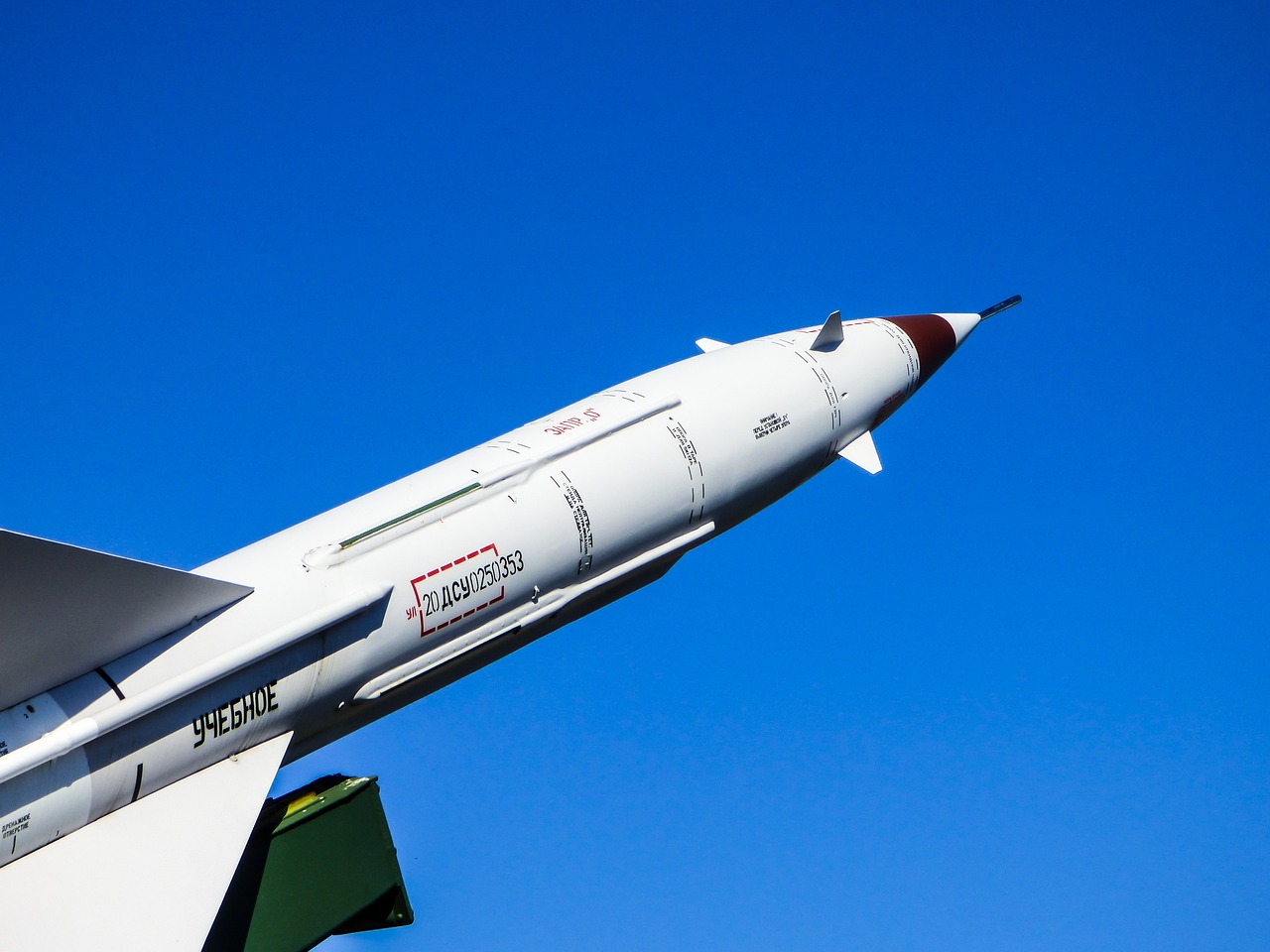
Asymmetric Warfare
Asymmetric warfare has transformed the battlefield in ways that traditional military strategies could never have anticipated. In this ever-evolving combat landscape, we see a stark contrast between the capabilities of established military forces and the unconventional tactics employed by smaller, less-equipped adversaries. This disparity creates a unique challenge for modern armed forces, forcing them to rethink their approaches to conflict. Imagine a heavyweight boxing champion facing a nimble street fighter; the rules of engagement are different, and so are the strategies needed to emerge victorious.
The rise of asymmetric warfare is not just a passing trend; it is a fundamental shift in how conflicts are fought and won. Traditional military might, characterized by large-scale operations and overwhelming firepower, is often rendered less effective against guerrilla tactics, cyber warfare, and information campaigns. These unconventional strategies can level the playing field, enabling smaller groups to inflict significant damage without the need for comparable resources. Think of it as David versus Goliath, where the underdog employs clever tactics to outsmart the giant.
One of the most significant aspects of asymmetric warfare is its reliance on non-traditional tactics. These may include:
- Guerrilla Warfare: Small, mobile groups use hit-and-run tactics to disrupt larger forces.
- Cyber Attacks: Targeting the enemy's digital infrastructure to create chaos and confusion.
- Propaganda and Psychological Operations: Manipulating information to sway public opinion and undermine morale.
As military organizations adapt to these challenges, they must also embrace new technologies and methodologies. The integration of advanced surveillance systems, drones, and cyber capabilities is crucial for countering asymmetric threats. However, the reliance on technology alone is not a silver bullet. Training personnel to think critically and adapt to rapidly changing scenarios is equally important. The battlefield of the future will not just be about who has the most advanced weapons, but who can outsmart and outmaneuver their opponent.
Moreover, the implications of asymmetric warfare extend beyond the battlefield. Military leaders must consider the broader geopolitical landscape, as these tactics can influence international relations and domestic stability. The rise of non-state actors has made it increasingly difficult for traditional military forces to establish clear objectives and outcomes in conflicts. As a result, the need for comprehensive strategies that incorporate diplomatic, economic, and military elements becomes paramount.
In conclusion, the challenges posed by asymmetric warfare require a multifaceted approach. Military forces must adapt not only their tactics but also their mindset. As the nature of conflict evolves, so too must the strategies employed to address it. The future of military operations will depend on a delicate balance between technological advancements and human ingenuity, ensuring that forces are prepared to face any challenge that comes their way.
- What is asymmetric warfare? Asymmetric warfare refers to conflicts where opposing forces differ significantly in military capabilities and tactics, often with smaller, less-equipped groups using unconventional methods to challenge larger forces.
- How does technology play a role in asymmetric warfare? Technology is crucial in asymmetric warfare, as it enables both sides to leverage tools such as drones, cyber capabilities, and advanced surveillance to gain an advantage over their opponents.
- Why is understanding asymmetric warfare important for military leaders? Understanding asymmetric warfare is vital for military leaders because it helps them develop effective strategies to counter unconventional threats and adapt to the changing nature of conflict.

Interoperability Among Forces
In today's complex battlefield, is not just a buzzword; it's a critical necessity. As military operations increasingly involve joint missions among various branches of the armed forces and allied nations, the ability to seamlessly integrate diverse systems, technologies, and personnel becomes paramount. Imagine a symphony orchestra where each musician plays a different instrument but must come together to create a harmonious melody. This is akin to how different military units must operate: each with its unique capabilities yet working towards a common goal.
One of the primary challenges in achieving interoperability lies in the differences in communication protocols and operational procedures across various military organizations. For instance, while one nation's forces may utilize advanced digital communication systems, another might still rely on traditional radio systems. This disparity can lead to confusion and inefficiencies during joint operations. To mitigate these risks, it is essential to establish standardized protocols that facilitate effective communication and coordination among all participating forces.
Moreover, training and exercises play a vital role in fostering interoperability. Regular joint exercises not only help in familiarizing personnel with each other's systems but also build trust and camaraderie among troops. These exercises can range from tabletop simulations to large-scale field operations, allowing forces to practice their coordination in real-time scenarios. Such preparatory measures ensure that when the time comes for actual deployment, all units can operate as a cohesive unit.
Another critical aspect of interoperability is the integration of technology. Modern military operations rely heavily on advanced technologies, including drones, satellite communications, and artificial intelligence. However, if these technologies are not compatible across different forces, their effectiveness can be severely compromised. Therefore, investing in compatible systems and technologies is essential. This could involve creating platforms that allow for data sharing and communication across different military branches and allied nations.
To illustrate the importance of interoperability, consider the following table that outlines some key benefits:
| Benefit | Description |
|---|---|
| Enhanced Coordination | Improved communication leads to better tactical decisions and execution. |
| Resource Optimization | Joint operations allow for shared resources, reducing overall costs. |
| Increased Flexibility | Forces can adapt to various combat scenarios more effectively. |
| Shared Intelligence | Access to a broader range of intelligence enhances situational awareness. |
However, achieving interoperability is not without its challenges. Differences in military culture, operational priorities, and even language barriers can pose significant obstacles. For example, the way a particular military force approaches a mission can vary dramatically based on its historical experiences and strategic objectives. To overcome these challenges, it’s crucial for military leaders to prioritize cultural understanding and foster a spirit of collaboration.
In conclusion, the future of military operations hinges on the ability of forces to work together effectively. As the global security landscape evolves, so too must the strategies that underpin military cooperation. By focusing on interoperability, armed forces can ensure that they are not only prepared for the challenges of today but are also adaptable for the uncertainties of tomorrow.
- What is interoperability in military terms?
Interoperability refers to the ability of military forces from different nations or branches to work together effectively, utilizing compatible systems and procedures. - Why is interoperability important?
It enhances coordination, optimizes resources, and increases the overall effectiveness of military operations during joint missions. - How can forces improve interoperability?
Through standardized training, joint exercises, and investment in compatible technologies.
Frequently Asked Questions
- What are the main challenges modern military operations face today?
Modern military operations encounter several key challenges, including technological advancements, cybersecurity threats, geopolitical tensions, and resource allocation issues. Each of these factors plays a crucial role in shaping the strategies and effectiveness of armed forces worldwide.
- How does technology impact military operations?
Technology significantly impacts military operations by providing advanced tools and systems that enhance capabilities. However, the rapid pace of innovation also requires military organizations to adapt quickly and integrate these technologies effectively to maintain operational superiority.
- What role does cybersecurity play in military effectiveness?
Cybersecurity is vital for military effectiveness as operations increasingly rely on digital infrastructure. Cyber threats can compromise missions, disrupt communication, and endanger national security. Therefore, robust cybersecurity measures are essential to protect sensitive information and maintain operational integrity.
- How do geopolitical tensions affect military strategies?
Geopolitical tensions influence military strategies by necessitating a reassessment of alliances and defense postures. Countries must remain vigilant and adaptable to changing global dynamics to ensure their military readiness and operational effectiveness in various regions.
- Why is resource allocation critical for military operations?
Effective resource allocation is crucial for maintaining operational readiness. With competing priorities and budget constraints, military organizations must make informed decisions to ensure they can adequately support their missions and maintain a strong defense posture.
- What are human factors in warfare, and why are they important?
Human factors in warfare refer to the understanding of behavior and decision-making in combat scenarios. Recognizing these factors is essential for improving training, leadership, and operational effectiveness, ultimately enhancing mission success.
- How does climate change affect military operations?
Climate change introduces new challenges for military operations, impacting logistics, resource availability, and operational planning. As the environment changes, military forces must adapt to ensure they can operate effectively in diverse and potentially hostile conditions.
- What impact do global health crises have on military operations?
Global health crises, such as pandemics, can severely disrupt military operations. These events highlight the need for preparedness and resilience, ensuring that military forces can respond effectively to public health challenges while maintaining operational readiness.
- What is asymmetric warfare, and how does it change military strategy?
Asymmetric warfare involves unconventional tactics that challenge traditional military strategies. The rise of such tactics requires a shift in military focus towards countering these threats and adapting to non-traditional combat scenarios.
- Why is interoperability among allied forces important?
Interoperability among allied forces is crucial for successful joint operations. Standardized protocols and effective communication systems enable cohesive action, ensuring that allied forces can work together seamlessly in complex operational environments.


